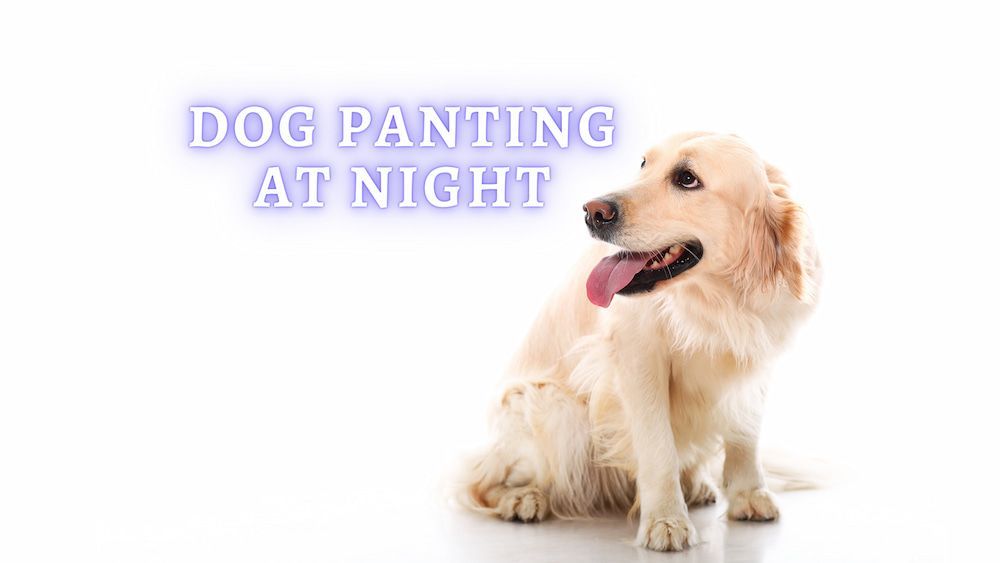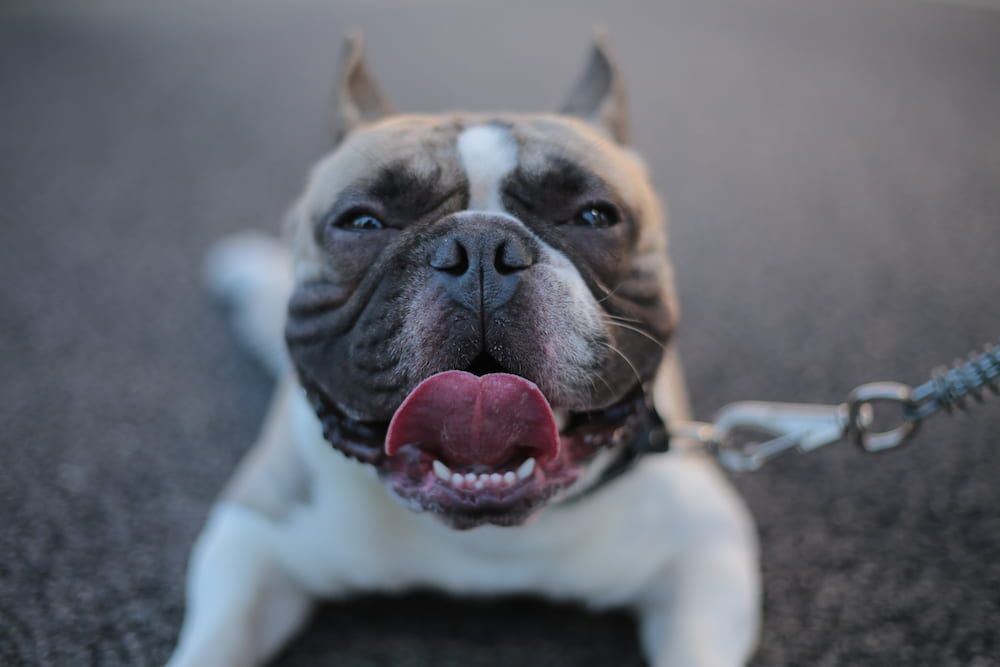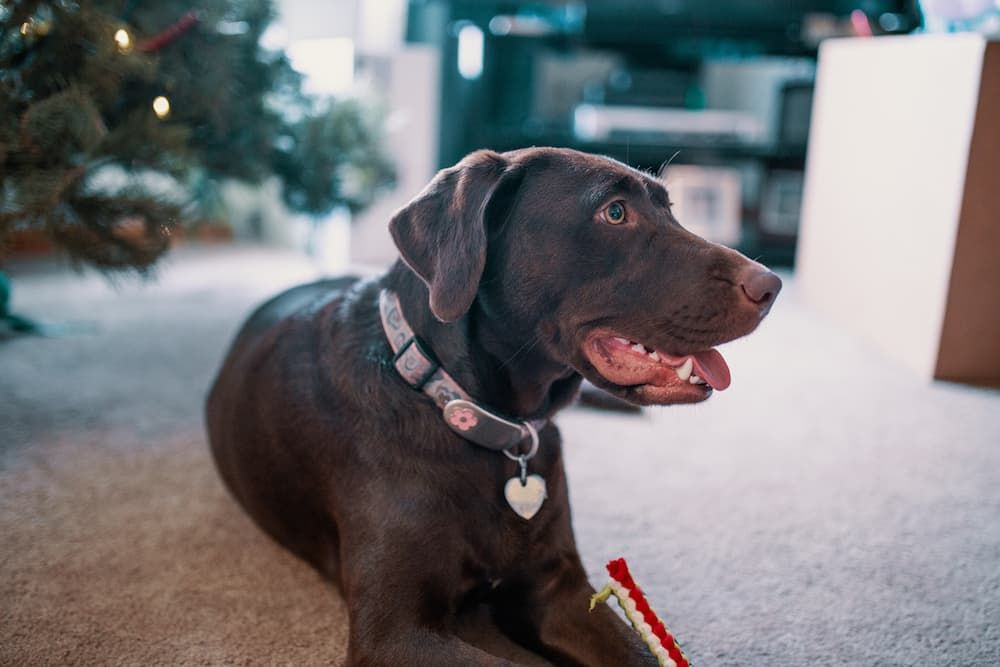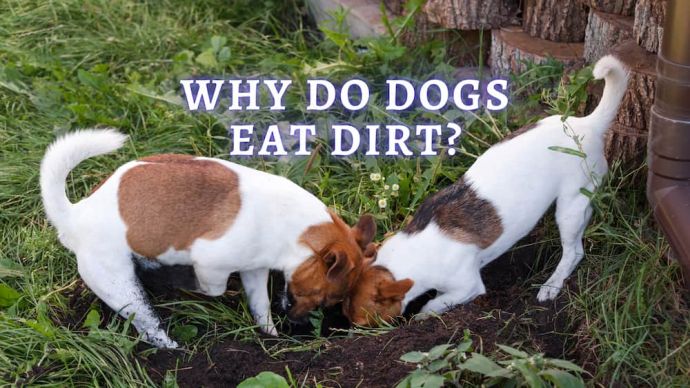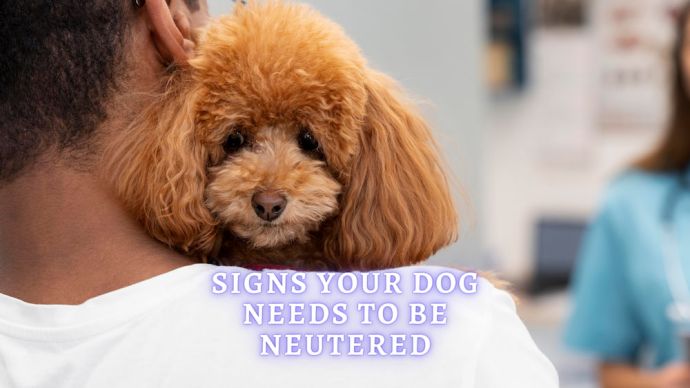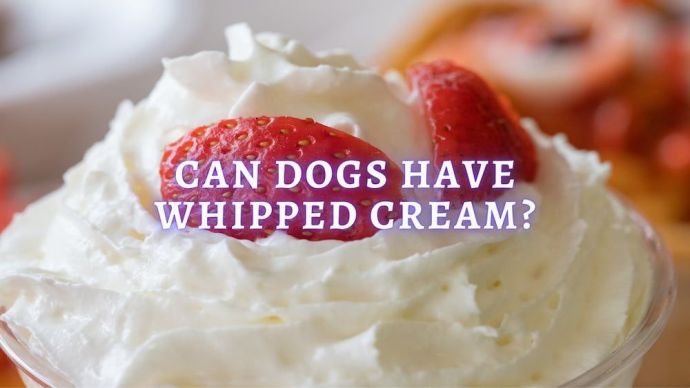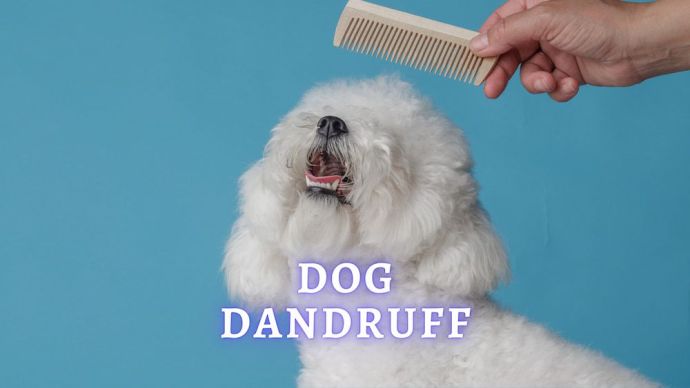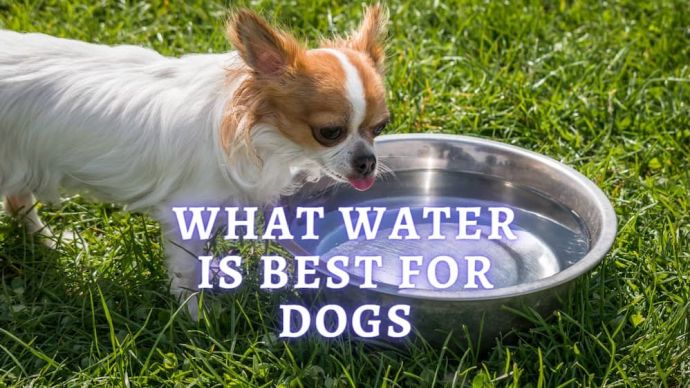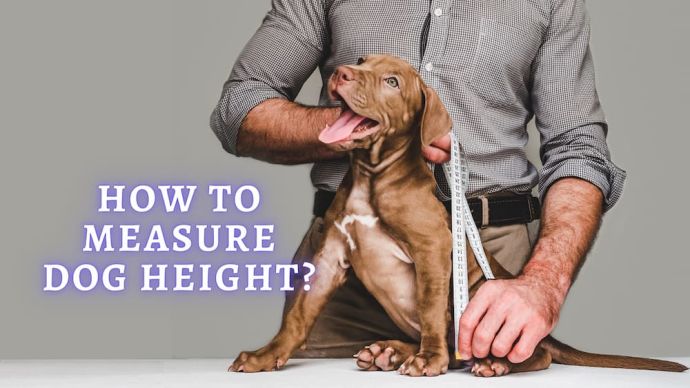Dog Panting At Night: Why Is My Dog Panting At Night?
Written by:
Author: Seb Jenkins
Seb is a professional SEO writer with a degree in Journalism, he has five years of experience in writing and editing. Seb specializes in topics like dog and cat breeds, aquarium guides, and pet care. He is passionate about educating and entertaining animal owners worldwide. In his spare time, Seb enjoys writing fiction novels.
View all 83 articlesLearn about our editorial process and veterinary review board.
Reviewed by:
Veterinary review
by Dr. Linda Simon
Dr. Linda Simon is a veterinary surgeon working with seven years of experience. She is a fellow of the British Veterinary Association and specializing in animal medicine. Also, she has been the Woman magazine resident vet for the past two years and writes a regular column for them, focusing on pets and their health.
View all 30 articlesLearn about our veterinary review board
Viewed: 4642
Updated on: 06/08/2023
Panting can be a completely natural part of being a dog, similar to heavy breathing for human beings. However, it is important to keep an eye and an ear out for when your dog is panting. For example, if they seem to be breathing heavily after a good old exercise or in the middle of a hot day, that is usually normal. However, if they are panting excessively in the middle of the night and seem restless, that could be a different story. In these cases, when there is no apparent cause for the panting, it can be easy for an owner to become worried. So, let’s take a look at why dogs pant and when it can indicate a more serious issue.
Why Do Dogs Pant?
As mentioned above, dogs pant for a whole host of different reasons, both biological and reasons that can indicate a health issue. Therefore, we are going to run through all the key causes of canine panting:
1. To Cool Down
The most common reason for a dog to pant is that they need to cool down. Unlike human beings, dogs cannot sweat through their skin, largely down their thick fur coats. Therefore, their bodies must come up with different ways to cool down. While dogs can sweat through the bottom of their paws, this is not enough to cool down dramatically. That is where painting comes in. The panting process allows them to move hot air out of their mouths, replacing it with cool outside air, evaporating water off their tongue, in their mouth, and in their throat. The evaporation process cools the body down and helps to regulate the dog’s body temperature. Therefore, panting is by definition, a natural process.
Those who have a more challenging time staying cool, such as obese dogs and brachycephalics, will pant more often than their peers.
DVM Linda Simon
2. They’re Feeling Anxious Or Stressed
Dogs are also known to pant when they are stressed or feeling anxious.
This is usually called ‘behavioral panting’. You can often differentiate between natural (physiological) panting and behavioral panting by the series of symptoms that tend to come with the latter. These include whining, yawning, shaking, pacing, hiding, and licking lips. Common times to see this behavior are during fireworks night when dogs are afraid of the loud bangs or perhaps when your little buddy realizes it is time to go to the vet.
READ MORE: Dog Afraid of Loud Noises
3. Brachycephalic Obstructive Airway Syndrome
Now moving on to potential medical issues can be indicated by panting, with the first being Brachycephalic Obstructive Airway Syndrome or BOAS. [2] Brachycephalic Obstructive Airway Syndrome is common in Brachycephalic dog breeds, recognizing their flat faces and squashed noses. These breeds include pugs, boxers, and French bulldogs. Unfortunately, these types of dogs struggle with breathing problems due to their basic anatomy. Because of their flat faces and narrow upper respiratory tracts, they cannot breathe and pant as effectively as other breeds, making them more at risk of overheating.
Underlying issues such as a collapsed trachea and elongated soft palate mean that their air exchange is less efficient and they are more prone to developing low oxygen.
DVM Linda Simon
4. Pain
The unfortunate truth is that animals are very good at hiding pain, making it all the harder for us owners to spot it when we need to. However, panting can be a tell-tale sign that your dog is in pain if panting at inappropriate times. For example, if they are panting a lot for no apparent reason in the middle of the night, it could be because they are in pain and are having trouble getting to sleep as a result. This is especially common in geriatric dogs who have joint disease.
This is especially common in geriatric dogs who have joint disease.
DVM Linda Simon
5. Heatstroke
As we mentioned in the cooling down section, dogs pant to get fresh cool air into their bodies. This is especially true on a hot day. However, dogs are not machines and, like humans, they can suffer from heatstroke if they remain in warm situations for elongated periods. For example, when a dog is left outside with no source of shade or water. Or when a dog is locked inside a car on a hot day. When a dog is suffering from heatstroke, they will pant extremely heavily and may seem weaker. Other signs can include drooling, glazed eyes and wobbly walking. If these symptoms develop, you should move your dog into a cool location out of the sun as soon as possible and give them some water if needed.
A light, wet sheet can be placed over them. Transport your dog to a vet immediately for emergency care and keep them cool on the way by cranking up the A/C.
DVM Linda Simon
6. Respiratory Problems
Panting can also be down to general respiratory problems. The harder it is for the dog to breathe, the harder they will pant. Pneumonia is a key example of a respiratory problem in dogs that involves the inflammation of the lungs/lower respiratory tract. Causes can include viral infections, food aspiration, and parasites. The respiratory disease also tends to cause coughing, a fever, difficulty breathing, and/or lethargy.
7. Side Effects Of Certain Medications or an Allergic Reaction
Dogs can also have allergic reactions to certain medications or food. If you have recently started them out on medication or changed their diet and notice excessive panting, this could be why. Allergic reactions can make it hard for your dog to breathe, even accompanied by vomiting, hives, and lethargy.
If you suspect your dog is experiencing an allergic reaction, bring them to your vet right away.
DVM Linda Simon
READ MORE: Dogs Seasonal Allergies
8. Heart Problems
Dogs that are suffering from heart problems usually pant a lot even when they are not exercising or hot. This may also come alongside lethargy, exercise intolerance, and coughing.
When the heart is not pumping effectively, oxygen is not transported to cells as it should be and the body pants in an attempt to bring more oxygen in. Heart failure can result in fluid build-up in the lungs and liver and this will also affect respiratory function and increase panting.
DVM Linda Simon
9. Hormonal Disease
Cushing’s Disease, which occurs when there is too much cortisol in the body, can cause a dog to pant excessively. Symptoms may also include a potbelly, thinning hair/skin, weight gain, and increased thirst.
The painting is thought to be driven by the excess cortisol, the extra fat deposits in the chest as well as the enlarged liver pushing on the diaphragm.
The hormone changes after a bitch whelps can also result in temporary panting.
DVM Linda Simon
10. Anemia
Low levels of red blood cells mean not enough oxygen is being carried within the body. [1] This can be due to blood loss, blood cell destruction, or the body’s failure to produce red blood cells (e.g., with bone marrow disease).
You may also notice your dog is lethargic and has pale gums.
DVM Linda Simon
11. Obesity
Obesity and panting go hand in hand in dogs. Fat dogs are hotter due to the extra insulation, so don’t cope as well when the temperature rises.
DVM Linda Simon
If your dog is overweight, they will also find it harder to pump oxygen around their bloodstream and will, therefore, pant more than fit dogs. Fortunately, it is usually pretty easy to tell when your dog is overweight just by looking at them. However, if you suspect that this might be the case, talk to a vet and discuss the next steps before more serious issues set in. As long as you catch it early enough, you should be able to reverse the effects with a fitness plan and diet.
What is the Difference Between Normal And Abnormal Dog Panting
As panting can both indicate a dog’s natural cooling-off process and serious health problems, it becomes important to be able to tell the difference between normal and abnormal panting. The first key step comes in counting your dog’s breaths per minute before and after exercise to provide yourself with a normal guide/frame of reference. This way, you know that something may be wrong if your dog starts panting a lot more than normal. The average for dogs is 12 to 20 breaths per minute while at rest or asleep and anything above 35 while resting is abnormal.
If your pooch starts to abruptly pant and you think they may be too hot, take them to a cool area away from any heat or direct sunlight. Give them a few minutes to cool off and then check their breathing again. If they are still abnormally high, it is time to call a vet. Having said that, if your dog is displaying any other signs of heatstroke, do not wait the 30 minutes, get them to a vet immediately.
Abnormal panting entails:
- Excessive and/or strained breathing.
- Harsher or higher-pitched breathing than normal.
- There are signs of distress alongside the panting, such as pacing, drooling, restlessness, crying, vomiting, or anything else out of the ordinary.
- Your dog is showing signs of shutting down, shaking, or hiding.
- They are panting more than usual but it is not from heat or exercise.
- Your pup is panting at night when they are usually resting peacefully.
What To Do If Your Dog Is Panting And Anxious?
The first step should always be to remove the stressor when dealing with excessive panting, restlessness, and anxiety. If it is in your control, this could be heat, noise sensitivity, lack of water, etc. If it is not in your control, sit with them to calm them. However, do not pat or stroke your dog too much as this will only confirm the fear in their minds. If the problem comes from anxiety [3], try to find the cause and deal with it. If the issue does not go away, talk to a vet to find a solution, which could come in medication. You can also contact a dog behavioral specialist or trainer to help manage stress.
FAQs:
Why Is My Dog Panting For No Reason?
The simple answer to this is that your dog is not panting for no reason. There is always a reason for a dog’s panting, whether it be their natural self-cooling system, or something more serious. A dog’s panting can be compared to a human’s sweating, designed to evaporate water and cool the body. However, dogs also pant when in pain, suffering from heatstroke, anxiety, stress, health problems and more. It is all about keeping an eye out for any additional symptoms and considering what may be causing the panting. Check the above article for more details.
Is Panting A Sign Of Pain In Dogs?
Panting can be a sign of pain in dogs, but not always. Dogs are extremely good at hiding their pain, which can make it tricky to spot. However, panting can give the game away if it is spotted during unexpected times. For example, if your dog randomly starts panting and pacing during the night, it could be because they are in pain and, therefore, cannot sleep. However, panting can also come down to some other reasons, including heatstroke, cooling, anxiety, stress, health problems, and more.
How Do You Calm A Dog From Panting?
You can only calm a dog from panting if their panting is linked to a few different things. If they are panting because they are stressed or anxious, of course, you can calm them down as a solution. This is often the case with loud noises such as fireworks or trips to the vet. Your dog is scared and needs your help to settle down. Short-term, this may mean anxiolytic medicine and providing them with your comfort and a safe space. Long term, consider hiring a behavior specialist and working on desensitization programs. your dog is panting due to health concerns, calming them down isn’t going to do much good, and they need to be assessed by a vet.
Article Sources:
- Brooks, Wendy. “Immune-Mediated Hemolytic Anemia (IMHA) in Dogs and Cats.” Veterinary Partner, 4 Mar. 2003, veterinarypartner.vin.com/default.aspx?pid=19239&id=4951868.
- Meola, Stacy D. “Brachycephalic Airway Syndrome.” ScienceDirect, sciencedirect.com/science/article/abs/pii/S1938973613000548.
- Scholz, Martina, and Clarissa von Reinhardt. Stress In Dogs — Learn How Dogs Show Stress and What You Can Do to Help. amazon.com/Stress-Dogs-Learn-dogs-stress-ebook/dp/B077ZGD6NZ.
 Dog Care My Dog Keeps Scratching His Mouth: Reasons Why Your Dog Scratching Face
Dog Care My Dog Keeps Scratching His Mouth: Reasons Why Your Dog Scratching Face - 16542
- 1
 Dog Veterinary Tips Why is my Dog throwing up: Causes and Preventing (Veterinary Advice)
Dog Veterinary Tips Why is my Dog throwing up: Causes and Preventing (Veterinary Advice) - 21356
- 5
 Dog Care My Dog Keeps Scratching His Mouth: Reasons Why Your Dog Scratching Face
Dog Care My Dog Keeps Scratching His Mouth: Reasons Why Your Dog Scratching Face - 16542
- 1









